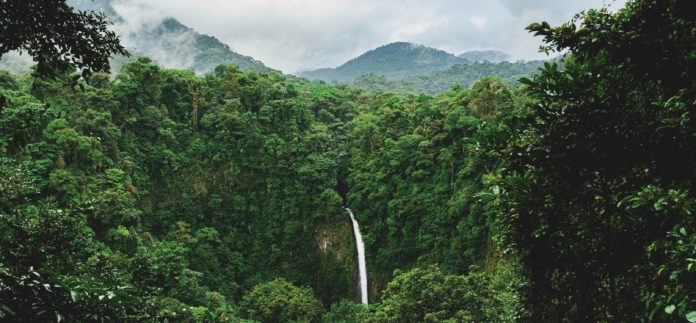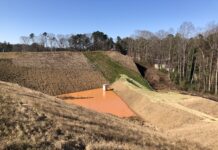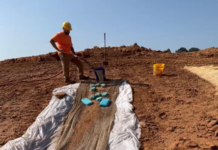There is no doubt that the global sea level is rising. The global mean sea level has risen 8 to 9 inches (21 to 24 cm) since 1880. The majority of that rise has occurred in the past 25 years.1
Climate change and the melting of glaciers and ice sheets are adding to the volume of water in the oceans1 but sedimentation also plays a role. One report demonstrates that sediment erosion and deposition, like ice growth and melt, produce significant changes in the Earth’s crustal elevation, gravity field, and rotation axis, all of which induce changes in sea level.2
While there are many areas to address the effects of climate change, this article focuses on equatorial rainforest region challenges, the role of sediment in sea-level rise and solutions that can assist in reducing sea-level rise.
Equatorial Rainforest Overview
The equatorial rainforest region is strategically located halfway between the northern and southern hemispheres. It can effectively affect environment change positively or otherwise.
The equator, being the longest circumference around the world (40,075 km or 24,902 miles) has the highest density of biodiversity of wildlife.
An average of more than 80 inches (203 cm) of rain falls annually in the equatorial region, with mountain and cloud forests receiving an average of 79 inches (201 cm) per year and monsoon rainforests receiving between 100 and 200 inches (254 to 508 cm) of rain per year.
Despite the fantastic growth of vegetation in equatorial rainforests (Figure 1), it is important to note that tropical rainforests soils are fragile. With a thinner layer of organic soils than is found in temperate climates, these areas are often referred to as wet deserts and are more susceptible to erosion if the natural protection from rain is removed.
Effect of Population Growth
Population growth in the equatorial rainforest region has led to building more roads and towns, clearing forests to expand agricultural areas and increased mining operations. While sediment and erosion control can be challenging in most areas, the challenges are greater in the equatorial rainforest region due to climate conditions not found elsewhere in the world.
A 1983 study reports that 70% of the river sediment deposition to the oceans is derived from Southern Asia and the larger islands in the Pacific and the Indian Oceans.3 It would not be inconceivable that perhaps the quantitative amount has grown since 1983 with the addition of deforestation and miscellaneous construction activities in this region collectively associated with the equatorial rainforest region.
The social and economic needs of the equatorial rainforest region are very different from the wealthier temperate countries. The climatic conditions of rainfall, heat and humidity, topography and soils beg the need for equatorial rainforest specific construction practices that are effective and practical for the region.
Suggested Solution
There are myriad complex issues within countries of the equatorial rainforest region that are very important but too complex to be addressed in one article, but it is important for erosion and sediment control experts to explore solutions specific to the rainforest. Mitigating erosion and sediment discharges from this region into the oceans is one step that can affect sea-level rise that results in seas flooding shoreline communities and the permanent loss of substantial islands.
One approach is to establish an equatorial rainforest center to serve as a one-stop opportunity to:
- Conduct research into best management practices (BMPs) that are tested for equatorial rainforest climate and soils.
- Collect data on specific mitigation measures that functionally perform in the region.
- Develop best practices for sediment and erosion control measures.
- Create best practices for improvement of water quality.
- Disseminate relevant and responsive knowledge learned from research into mitigation measures to inform development activities of agriculture, forestry, infrastructure construction and property in the countries within the equatorial rainforest region.
- Explore and encourage new techniques including but not limited to sediment and erosion control BMPs.
The development of an independent center would greatly increase the awareness of the equatorial rainforest region’s ability to positively affect climate change. Representation should include countries within the equatorial region, international support from academically and technically related association and institutions and financial institutions. Input from all stakeholders could lead to the development of a framework for positive mitigation measures. The net result would be to prevent the relentless mudflows of sediment from rainstorm impact from this region’s construction sites, thereby reducing erosion and the flow of sediment into the oceans.
References
Lindsey, Rebecca. Climate Change: Global Sea Level. Climate.gov. Published August 14, 2020. Updated February 16, 2022. https://www.climate.gov/news-features/understanding-climate/climate-change-global-sea-level.
Ferrier, KL; vad der Wal, W; Ruetenik, GA; Stocchi, P. The importance of sediment in sea-level change. PAGES Magazine. May 2019.
Milliman, J; Meade, RH. The World-Wide Delivery of River Sediment to the Oceans. The Journal of Geology. Volume 1, Number 1, January 1983.
About the Expert
Kwok Wing Leong, PE, has a civil engineering background that includes highway infrastructure and soft-soil-heavy-load support design and construction, erosion and sediment control. He is a founding member of the Malaysian Stormwater Organization and is responsible for the introduction of several sediment and erosion control courses to Malaysia.













